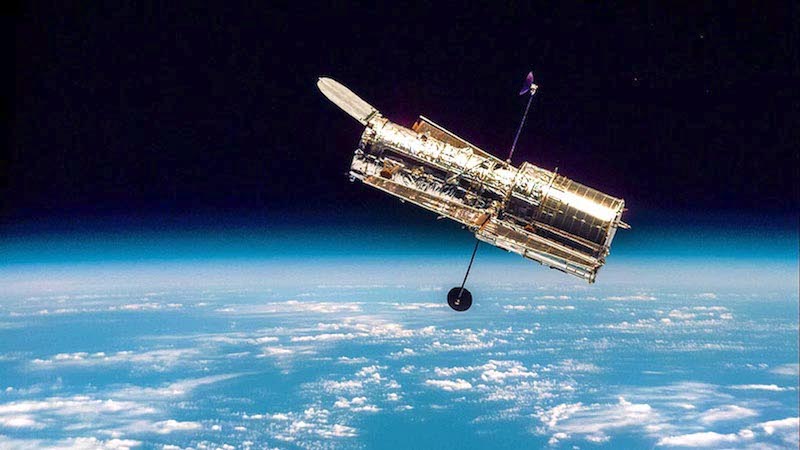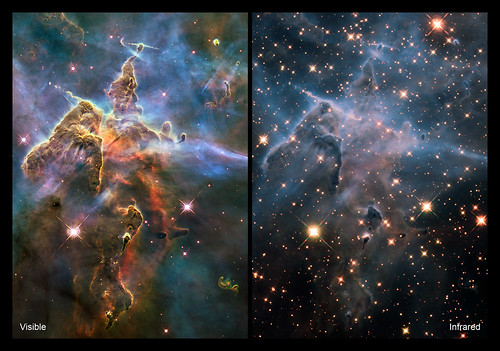
Hubble went into safe mode on June 13
NASA said on July 17, 2021, that it has returned the science instruments on the Hubble Space Telescope to operational status. That’s just over a month after the space telescope was placed in a protective safe mode. A degrading computer memory module was the source of the halt. Now, NASA said, the collection of science data will resume. NASA Administrator Bill Nelson commented:
Hubble is an icon, giving us incredible insight into the cosmos over the past three decades. I’m proud of the Hubble team, from current members to Hubble alumni who stepped in to lend their support and expertise. Thanks to their dedication and thoughtful work, Hubble will continue to build on its 31-year legacy, broadening our horizons with its view of the universe.
NASA said the first observation was scheduled for this past weekend, after some instrument calibrations were completed. Most observations missed while science operations were suspended will be rescheduled for a later date.
What is safe mode?
While in safe mode, the Hubble telescope is not pointing toward targets or collecting data, but it stays powered via its solar panels.
Flight controllers from NASA’s Goddard Space Flight Center tried restarting Hubble on June 21, but the attempt was unsuccessful. Then the plan was to try to restart a backup memory unit. This backup hadn’t been powered on since its installation back in 2009, but was thoroughly tested on the ground. NASA performed a similar switch just a year previously, in 2008, which was a success and enabled Hubble to continue normal science operations after a previous module failed.
The Hubble team feverishly investigated the cause of the payload computer problem since it first occurred. On July 15, the team successfully switched the spacecraft to backup hardware.
Read more: NASA returns Hubble Space Telescope to science operations
Enter the James Webb Space Telescope, successor to Hubble
The Hubble Space Telescope was launched in 1990. It’s shown increased signs of aging in recent years, despite a series of repairs and updates made by astronauts to keep the telescope in good health. Before the current June-July 2021 safe mode, Hubble’s last safe mode incident occurred just a few months ago when an onboard software program failed during a guide star acquisition in March.
That dark spell lasted five days, but Hubble rebounded in good shape.
The James Webb Space Telescope – also known as JWST or simply the Webb – is currently in development and slated for launch in November of this year. The Webb will observe farther into the infrared regions of the electromagnetic spectrum than Hubble as well as the now-decommissioned Spitzer infrared space telescope. It’ll go even deeper into space than Hubble – 1 million miles (1.6 million km) away, too far for astronaut tune-ups – and it’ll look further into the past. NASA likes to say that the Webb is not a replacement for Hubble but rather a successor. As it did for Hubble, the Space Telescope Science Institute in Maryland will operate the Webb telescope after launch. The two telescopes will even collaborate side by side for a while with a planned overlap.

Progress on the Webb
Significant progress was made in the Webb’s development in February this year with the success of its final functional performance tests. The two testing milestones – the comprehensive systems test and the ground segment test – confirmed that the observatory’s internal electronics are operating as intended. They also verified that its four science instruments can send and receive data, moving it closer to its highly anticipated launch date.
Webb’s launch is years behind schedule. Its latest delay – announced on June 1, during an ESA briefing – serves as a grace period for team engineers to review payload fairing problems linked to the Ariane 5 rocket it will ride. The payload fairing is essentially the rocket’s nose cone, covering the payload.
Bottom line: The aging Hubble Space Telescope is resuming normal operations, NASA said, after successfully switching the spacecraft to backup hardware on July 15, 2021.
Read more from EarthSky: Webb Space Telescope launch delayed











